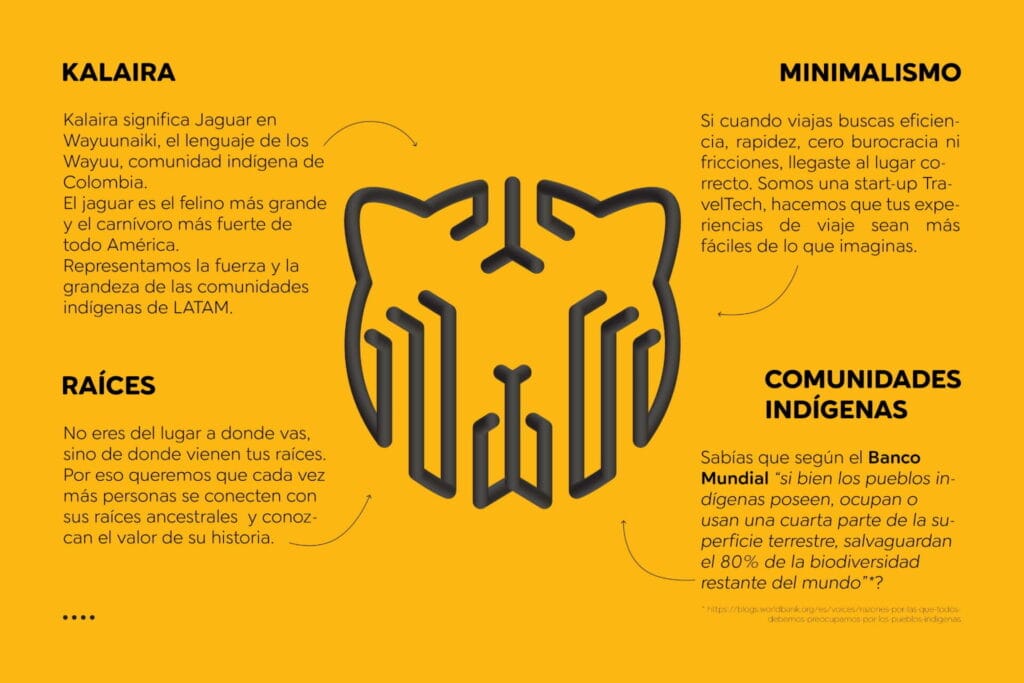Kalaira was born after a journey to the lungs of the world, the incredible Amazon. There, we witnessed how some traditional travel agencies operating in the region did not value the cultural richness of the indigenous communities or their importance for nature and the fight against climate change.
Kalaira aims to become the largest marketplace for ethnotourism in the world. We offer experiences that inspire travelers to protect nature, sharing indigenous wisdom directly from their ancestral storytellers in each one. We guarantee fair payment, and above all, we guarantee the protection of their culture and territory, thus preventing their migration to cities, forced displacement, deforestation, and other issues.
“While Indigenous Peoples own, occupy, or use a quarter of the world’s surface area, they safeguard 80% of the world’s remaining biodiversity.”
World Bank
Kalaira means jaguar in Wayuunaiki, the language of the Wayúu indigenous community, the largest in Colombia. The jaguar holds ancestral significance in many indigenous communities. Additionally, it is the largest feline and the strongest carnivore in all of the Americas. It is an umbrella species, vital for the conservation of the entire ecosystem it inhabits. Through the jaguar, we represent the strength and grandeur of indigenous communities.
In his article Economic Development and Environmental Conservation: Evidence from Eco-Tourism, Santiago Saavedra presents evidence on how ecotourism can help not only make tourism sustainable but also generate a positive impact on nature through tourism. At Kalaira, we promote impactful, cultural tourism that prioritizes the protection of indigenous peoples and the territories visited by travelers.
"We found that where ecotourism is promoted, employment increases by 16% and deforestation decreases by 50%."
Santiago Saavedra

© 2025 Kalaira. Todos los derechos reservados.
Scroll down to see all difficulty levels.
Extremely Difficult
Very Difficult
Full-day mountain hikes
Moderately Difficult
5-10 km (3-6 miles)
3-5 km (2-3 miles)
Less than 3 km (less than 2 miles)
More than 30 km (19 miles)
20-30 km (12-19 miles)
15-20 km (9-12 miles)
10-15 km (6-9 miles)
5-10 km (3-6 miles)
3-5 km (2-3 miles)
Less than 3 km (less than 2 miles)